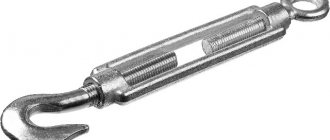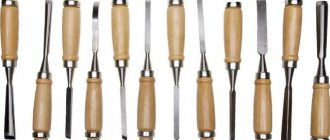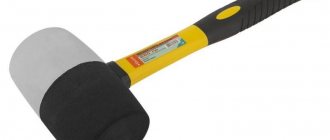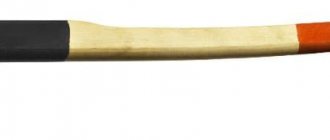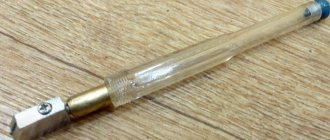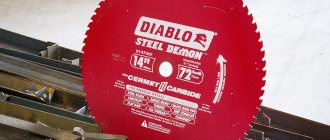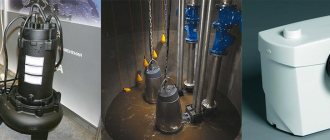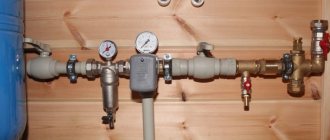Almost any rigging work cannot be done without the use of a special hand-held device called a lanyard.
The system of this tool is extremely simple and reliable, because... provides high strength of connections and ease of use.
This cable tensioner is used where human strength is simply not enough, and the tension is maintained for a long time.
In addition to the construction industry, lanyards are used on ships, when creating cable networks between houses, and even for tensioning ropes in sports rings.
These devices were once used in aviation.
Load capacity, marking and price
The lanyard marking contains a symbol of the type of head, the length of the coupling excluding rings and the thread size indicating which side the left thread is on.
The type of product and its coating are indicated in the accompanying documentation.
As for the load capacity (maximum load), it is sometimes noted in the same documents for the product, depending on the type of load grip and the size of the thread.
You can view the full list using the corresponding table.
As an example:
• M6 – 40 kg for hook, 100 kg for eye;
• M8 - 80 kg and 200 kg respectively;
• M10 - 150 kg and 500 kg.
The cost depends on the size, material, coating, type and other parameters.
For example, the simplest version of the DIN1480 standard with an M6 thread will cost from 70 rubles, while a marine product GOST 9690-71 with an M56 thread will cost about 19 thousand rubles.
The most common tensioners will cost 400 – 1500 rubles.
TECHNICAL REQUIREMENTS
2.1. Lanyards must be manufactured in accordance with the requirements of this standard according to drawings approved in the prescribed manner.
2.2. The materials of the lanyard parts must correspond to those indicated in the table. 6.
Table 6
| the name of detail | Material |
| Stamped coupling, fork, eye, hook, axle with collar | Steel 25 according to GOST 1050-74 |
| Pipe | Steel 20 according to GOST 1050-74 |
| Open Weld String | VSt3sp4 according to GOST 380-71 |
| Welding socket nuts | VSt3sp2 according to GOST 380-71 |
| Closed weld socket washer | VSt3sp according to GOST 380-71 |
(Changed edition - “Informational Index of Standards” No. 12 1973).
It is allowed to use other materials whose mechanical properties are not lower than the properties of the materials indicated in table. 6.
2.3. The quality of materials for forged parts must correspond to strength category KP 25 according to GOST 8479-70. For other parts of the load-bearing elements, the yield strength of steel is at least 23 kgf/cm2.
2.4. Tolerances for stamping dimensions are in accordance with GOST 7505-74.
2.5. Locknuts - according to GOST 5916-70 and GOST 10607-72.
2.6. Pipe - according to GOST 8734-75.
2.7. Metric thread - according to GOST 9150-59, maximum bolt deviations - 8 g
, nuts - 7N according to GOST 16093-70, rungs - according to GOST 10549-63. Grooves in threads are not allowed. The thread must be clean, without dents, scratches, burrs or broken threads.
(Changed edition - “Informational Index of Standards” No. 12 1973).
2.8. Welding must be carried out with electrodes whose mechanical properties are not lower than type E 42 A according to GOST 9467-75. Welds must be cleaned.
2.9. The lanyard parts should not contain cracks, cavities or other defects that affect the strength and presentation of the products. The surfaces of the parts must be clean, sharp edges must be rounded.
2.10. The shanks of forks, lugs and hooks must be made with right-hand and left-hand threads.
2.11. All parts of lanyards must have coatings in accordance with GOST 9791-68, ensuring the operation of lanyards in normal and tropical conditions.
2.12. The service life of lanyards on a ship is at least 15 years.
How to choose a lanyard?
The most important parameter when choosing a device is its maximum operating load.
Products that are used to secure various units and loads in a vertical position must have a decent margin of 600 - 900%.
Safety is important when working with lanyards.
The determining factor in this matter is how well the rope or cable grips the hook.
The safest are the fork-fork options, where the hook of the sling is covered with a finger made of hardened steel.
Attention!
Options with two hooks are the least safe.
When choosing a lanyard, you should familiarize yourself with its markings, which must strictly be present on the body.
Certified products are usually accompanied by relevant documents.
In addition to the load, the size of the device is an important factor if it is planned to be used in a confined space.
Attention is paid to the presence and degree of anti-corrosion coating.
If products have special operational requirements, they can be equipped with additional devices, for example, a ratchet mechanism.
Before purchasing and using a lanyard, it must be checked for:
• Matching type of thread of the end parts and the body;
• Absence of any damage;
• No wear, any distortions or distortions;
• No cracks, burrs, grooves.
Important!
Make sure that the kit includes lock nuts, which must be used in the work.
Otherwise, the mechanism under load is capable of spontaneously unwinding.
If it is necessary to replace one or both terminal elements, similar options are selected, and their compliance with the applied loads must be checked.
Operating principle and types of screw lanyards
A screw cable tensioner consists of a coupling-housing with two threaded holes for screws with different thread directions. When the couplings are rotated in one direction, they are screwed into the body, and in the other they are unscrewed, which allows you to continuously change the overall length of the tightening device. Adjustment does not require special physical effort and can be done at any time as needed.
The turnbuckle body has two versions - open or closed (bushing). The latter are suitable for harsh operating conditions, when there is a risk of damage, icing, clogging of the tension mechanism with dirt or sand. According to the manufacturing method, couplings are welded, stamped, forged and cast.
Screw heads are made in the form of a hook, a ring, a fork, a pin, or a combination of these, such as a hook-ring or a fork-eye. A high level of reliability is ensured by fork-fork tensioners. A welded stud-stud lanyard is used in cases where it is necessary to connect it with other rigging elements or structures by welding, thereby creating a permanent connection.
What you need to know about lanyards?
Lanyards also include the so-called chain ratchets - tensioners, which are used to secure long loads.
The cables are tightened by twisting the tension chain located between the grips.
This device consists of the following elements:
• Cable tensioner (chain);
• Two stoppers;
• Tension mechanism (ratchet wheel mounted on a shaft with a ratchet).
In the simplest ratchet design, the tension slack is taken out not with a ratchet, but with a special lever, which is used to perform rocking movements.
ACCEPTANCE RULES
3.1. Lanyards must be accepted by the technical control of the manufacturer.
3.2. Lanyards are subjected to acceptance tests. The composition, sequence of tests and sample size must correspond to table. 7.
Table 7
| Test name | Sample size | Test methods |
| Measurement | 5% of the lot, but not less than 3 pieces. | According to clause 4.1 |
| Part material | Same | According to clause 4.2. (clause 2.2) |
| Checking Welds | » | According to clause 4.7 (clause 2.8) |
| Coverage check | » | According to clause 4.8 (clause 2.11) |
| Double Load Tension | 100% batch | According to clause 4.3 |
| For ease of rotation | Same | According to clause 4.4 |
A batch is defined as the number of lanyards of the same standard size, made of material according to the same certificate.
3.3. The consumer has the right to carry out a control check of the lanyards.
Production technology
Ring-to-ring lanyard, hook-to-ring lanyard, fork-to-fork lanyard, and hook-to-hook lanyard devices operate under difficult operating conditions. This is due to the fact that when a load occurs, all elements work in tension, sometimes accompanied by bending.
It is also important that the force changes periodically over time, so the reliability and durability of the device also depends on the fatigue limit of the material
Standard sizes of ring-to-ring lanyard according to DIN 1480
The critical element of the drawing is the coupling. As a tensioner, it works under alternating loads. In addition, the frame structure of most standard couplings already contains stress concentrators at the transition points from the side posts to the threaded base. Therefore, these transitions in the drawings are designed in the form of radius curves, the diameter of which is determined by the overall dimensions of the assembled lanyard.
Ring-to-ring lanyard, hook-to-ring lanyard, fork-to-fork lanyard are never produced in welded versions. In addition, it is extremely undesirable to manufacture couplings by casting, even from high-quality structural steels (for example, from casting grade 45L according to GOST 977). The possibility of the presence of internal voids and cavities in the casting remains with any technological production option, which dangerously weakens the cross-section, especially at fastening points. The performance indicators of the milled versions should also be considered not very successful. During the machining process of the parts included in this assembly, the fibers of the metal macrostructure are cut, which reduces durability.
Hot stamping is considered the optimal method for producing parts included in the structure: during its course, plastic redistribution of the volumes of deformed metal occurs, while the fibers bend along the contour, maintaining the strength of the forging. During cold die forging, even hardening of the metal occurs, which makes it possible to produce devices from cheaper grades with a reduced carbon content (for example, from steel 20).
After stamping, the parts are subjected to heat treatment - normalization at 820...860 °C, followed by cooling in air. Quenching is carried out at the same temperatures of heating into oil. The final hardness should be in the range of 190…220 HB. For anti-corrosion protection, a galvanized lanyard is used.
TEST METHODS
4.1. Measurement of lanyards should be carried out using a universal measuring tool, templates and gauges.
4.2. The material of lanyard parts must be verified according to certificates or laboratory analysis data.
4.3. Lanyards are tested for tension with double the permissible load. The holding time under load must be at least 5 minutes.
4.4. Before testing and after testing according to clause 4.3, turnbuckles must be inspected, as well as checked for ease of rotation of the threaded connection.
4.5. Head samples of lanyards must be tested at four times the permissible load, and they must not be destroyed. Elongation of parts is not considered destruction.
4.6. Lanyards and their parts tested according to clause 4.5 are not subject to further use.
4.7. The quality of welds is checked according to GOST 3242-69.
4.8. The quality of lanyard coatings is checked according to GOST 3002-70.
4.9. Testing of material samples of forged parts of lanyards must be carried out by the manufacturer in accordance with GOST 8479-70 (IV group). During serial production, it is allowed to carry out tests in accordance with GOST 8479-70 (II group).
Design
The insides of the part are not hidden, so it is more convenient to adjust the tension. The body is made by casting, forging or welding. And the holes for the screws are milled, they regulate the force. For difficult weather conditions, a closed type lanyard is used, which consists of three parts:
- Frame.
- Two screws (left and right thread).
- Screw heads (hook, fork and ring).
Each part of the device is precisely calibrated and will perform a specific function that meets the standards. International documents regulating the technical characteristics and production of lanyards - DIN 1480, DIN 1478. In the territory of the former USSR - GOST 9690-71.
PTR 7-1 lanyards (as these devices were previously called) helped keep steel ropes and cables under constant tension. But they did not have such a large number of heads, unlike modern models. There were oblong loops at the ends. The load for which the lanyard is designed was indicated in the name, based on the ton-force indicator. New models are designated by the parameter in kN. T 30-01, withstands 3 tf or 30 kN.
